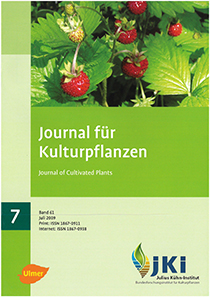Aspects of ecotoxicology of heavy metals in the Harz region – a guided excursion
DOI:
https://doi.org/10.5073/JfK.2009.07.01Keywords:
Harz, mining, heavy metal contamination, vegetation, plant communitiesAbstract
The Harz Mountains are rich in metallic ores and show many remnants of former mining activities. Mining has caused extreme heavy metal pollution in the mountain area as well as in the valleys of rivers discharging from it. This is mirrored in the vegetation found here today. This excursion guide describes a route through the Harz mountain area along which remnants of mining activities and related vegetation can be studied. Near Bredelem, a Bronze Age smelting site is visited. On slag heaps, a poly-metallic soil has developed, which only allows for the growth of some specialised plant species. The area around Wildemann shows a typical heavy metal plant community (Armerietum halleri) on mine tailings, and gives insight into the impact of aerial emissions from the former lead smelter at Frankenscharrnhütte on the surrounding vegetation. At St. Andreasberg, the Samson silver mine displays the last original and fully functional “Fahrkunst” of the world. Around this area, there are fine examples of typical vegetation on arsenate-enriched soils. A stop at the river banks of the river Oker allows to study a well developed and quite diversified version of the Armerietum halleri on metal-enriched river sediments. West of Oker City, flotation waste ponds bear a permanent witness of high ecotoxicological relevance to the mining and ore processing activities.
Downloads
Published
Issue
Section
License
The content of the journal is licensed under the Creative Commons Attribution 4.0 License. Any user is free to share and adapt (remix, transform, build upon) the content as long as the original publication is attributed (authors, title, year, journal, issue, pages).
The copyright of the published work remains with the authors. The authors grant the Journal of Cultivated Plants, the Julius Kühn-Institut and the OpenAgrar repository the non-exclusive right to distribute and exploit the work.







